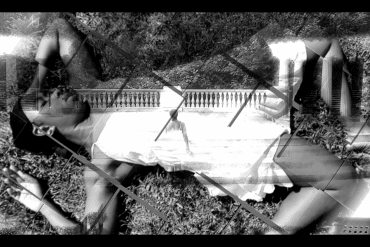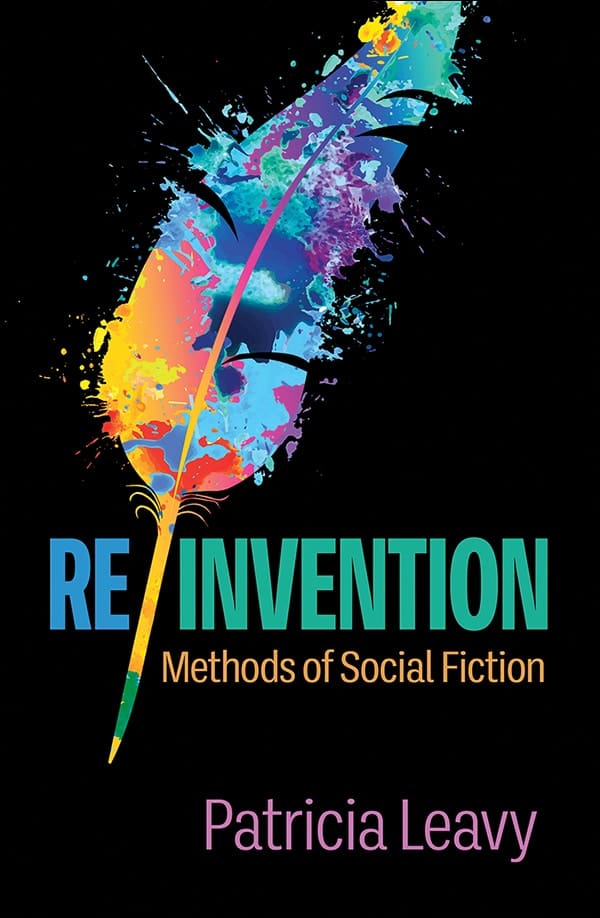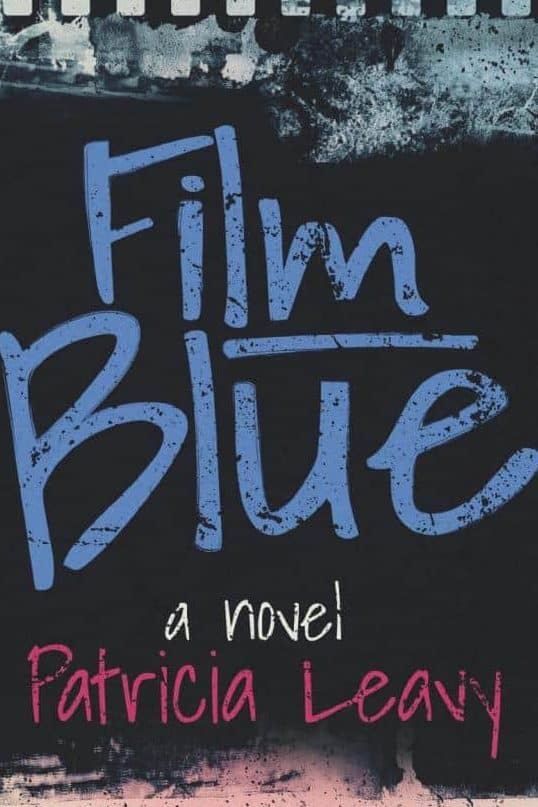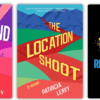What Is Social Fiction? Talking Re/Invention with Patricia Leavy
The AutoEthnographer is excited to continue our discussions about social fiction and re-invention with author and scholar, Patricia Leavy. In our latest chat, Patricia discusses the evolution of the self-coined social fiction genre and offers a sneak peek at her latest publication, Film Blue.
MARLEN HARRISON: How long have you been writing creatively?
PATRICIA LEAVY: My whole life, really. I started young, around five or six, writing stories and poems. At the age of ten I tried to write a novel, but it didn’t pan out.
Marlen: Do you have any of your early writings?
Patricia: Yes. My mother saved a few things. She gave me a book that I made when I was probably six or seven. As you can imagine, it’s a really simple story, just about my family, but I wrote and illustrated it and even bound it with old wallpaper.
Marlen: When did you begin to merge creative writing with academic scholarship?
Patricia: Some people probably think I started a decade or so ago, but I’ve actually been writing creative scholarship for my entire career, beginning in graduate school. Some of my earliest publications show that I was always interested in experimental and literary approaches to academic writing. For example, my piece Femigraphing Frankenstein: Technological Silencing was published in the journal CTheory in 2001. I was still a graduate student. There were earlier publications too, in the late 90s. I’m by no means claiming any of these early works were especially good, but they were creative. I was playing. The seeds for my later work were there.
But it was my immersion in the research methods literature that ultimately brought me to social fiction. About twenty years ago, at the beginning of my career, I started publishing a lot about qualitative research methods, including innovative methods. That lead me to arts-based research, which I started reading and writing about around 2005. At the time, I was playing with poetry as a way to represent my research. A couple years later, I wrote my first novel, Low-Fat Love, which was released in 2011. I called the novel a work of social fiction. I’ve been publishing fiction ever since.
Marlen: In 2010 you coined the term “social fiction” and in 2013 you coined the terms “fiction-based research” and “fiction as a research practice” (although I know from previous conversations you prefer the term social fiction). In 2010 you also launched the Social Fictions book series, originally with Sense Publishers and later with Brill. It was the first and only book series published by an academic publisher to exclusively publish full-length literary works and was enormously successful under your decade-long tenure as editor. For years you’ve also written about fiction in your many research methods texts. You’ve just released Re/Invention: Methods of Social Fiction. People are excited that the OG herself has written the textbook many have been waiting for. Why now?
Re/Invention: Methods of Social Fiction
Patricia: This is something I’ve hoped to do for a long time. But the timing had to be right. First, I really needed to develop my chops as a novelist. I wrote about fiction as a research practice nearly a decade ago, at the invitation of a publisher, but at the time I had only published two novels. Truthfully, I had a lot to learn. Now that I’ve written more than a dozen novels, I felt I could come from a more experienced place. Second, it was a question of time and space. My lengthy lockdown during the pandemic afforded me the time and also the mental space to take it on. This book is important to me. I consider it the culmination of my career to date, as a scholar and novelist. So, it was a daunting task. There are no do-overs. I wanted to get it right. I wanted to do the field justice. I wanted to make it as useful as I could for the students, researchers, and writers who might read it or teach with it. For many reasons doing literary scholarship can be uniquely challenging—there are gatekeepers, institutional demands, competitive publishing landscapes to navigate. So, it was important to do my best, which is what I tried to do and I’m proud of the result. The timing was right.
Marlen: Given your reputation in the field, I imagine you had your pick of publishers.
You’ve published Re/Invention as the launch book of the How-To Qualitative Research Guides with your long-time publisher, Guilford Press. Can you tell us a little about the series and your decision to publish with them?
Patricia: Yes,I was fortunate that there was interest in this book from more than one publisher. However, as I told my editor, it was Guilford’s no question, if they wanted it. I may be a terrible negotiator! Based on my experience with many different academic publishers over the years, including more than 15 years with Guilford, it was a no-brainer. They’re a world-class publishing team. From editorial feedback to stellar production to sales and marketing, they’re the best in my experience. I’m enormously proud of the research methods texts I’ve done with them over the years and wanted this book to stand alongside them. I’m grateful to the owners for taking a chance on this book and their continued support of my work and the field.
Working with Guilford on a research methods book series is a dream realized. C. Deborah Laughton, the publisher of the methods line has done an extraordinary job creating a catalogue of truly useful books. The market is flooded with qualitative methods texts; however, many of them don’t offer the kind of step-by-step or “how-to” guidance that students often want. That’s where our series comes in. The idea is that each book gives students and professors a lot of bang for their buck, offering in-depth methodological instruction and ample pedagogical features, accessibly written by experienced researchers. Currently, the series is by invitation only. I felt it was important to publish Re/Invention as the launch title to show the faith I have in the publisher and series. I consider this to be one of the most important books in my catalogue and I’m honored and proud to release it in this series.
Marlen: Tell us about the eye-catching cover and the title.
Patricia: The cover-creation process at Guilford is pretty collaborative. I shared my preferences regarding the colors and overall feel. My editor came up with some ideas based on that. In the end, the credit goes to Paul Gordon who handles art design. He’s brilliant. He created the cover, as all my Guilford covers. He’s a delight to work with—smart and artistic—and I think he did an extraordinary job conveying the content of this book. It really pops.
The title speaks to the content of the book. For years people have been saying that I created social fiction. Well, not exactly. I coined the term, added to our understanding of it, and I’ve tried to help legitimate the practice, but I did not create it. Writers/scholars/artists have been doing this work for many, many years. As I discuss in the book, consider the many novels, novellas, short stories, and plays written by Simone de Beauvoir, Jean-Paul Sartre, and Zora Neale Hurston, just to name a few well-known examples. W. E. B. Dubois also wrote several novels, one of which was a romance novel, something I’ve done many times. But there are countless others. So, the premise of the book is that social fiction is not a new invention. It is a re/invention.
Marlen: Please describe the contents of the book for us.
Patricia: There are in-depth chapters on writing as inquiry, the historical and contemporary context for social fiction, how to write social fiction, and evaluation criteria and publishing advice. There are also chapters on the different narrative structures used to write fiction, for example, the traditional three-act structure. In each of those chapters the basics of the structure are reviewed followed by an excerpt from one of my published works of fiction that follows that specific structure. Each excerpt, some of which are entire chapters from my novels, is followed by an original reflection in which I discuss my intention and the writing process. I also point out features of fiction that have been reviewed in previous chapters, such as foreshadowing or interiority. The book concludes with an appendix of suggested readings as well as references and an index. My hope is that it’s everything a reader would need to understand and write social fiction.
Marlen: How did you select excerpts from your published fiction?
Patricia: That was tricky. For the first time in my career, I had to reread all my fiction and make some difficult choices. For example, one of my favorite novels is not mentioned at all. It simply wasn’t needed to illustrate the points in the book, so I didn’t use it. Other extracts weren’t chosen because although I personally love them, they give away too much of the plot of that novel. I didn’t want to ruin the novels for anyone who may want to read them in the future. Mainly I tried to choose extracts that would best aid the lessons in the book, not necessarily my favorites. It was challenging because this book represents my body of work more than any other single text—my contributions to social fiction philosophy and methodological practice, and my work as a novelist. Naturally, I wanted it to represent my work well. In the end, it was a balancing act between selecting excerpts that best represent my fiction writing and choosing those that would best assist readers.
Marlen: What pedagogical features can professors expect to find?
Patricia: I’m so glad you asked because there are many features designed to assist individual readers/researchers or students in class. There are tip bubbles throughout the book in which I offer extra advice. There are also lists of questions and things to consider throughout the book. Each chapter ends with two sets of exercises. “Skill-building” exercises are meant for students. “Rethink your research” exercises are meant for anyone already engaged in research. If you do all the end of chapter exercises in the book, you’ll be well on your way to writing a new work of social fiction or reimagining your existing research as a work of social fiction.
Marlen: You offer great tips throughout the book as well as publishing advice. What’s your best advice to a student or researcher who wants to write social fiction?
Patricia: Do it. Just do it. Practice. Be rigorous learning your craft. Have fun. Revise/rewrite. Revise again. Then revise some more. Seek ample feedback during the writing process, but once you make peace with it and let it go, really let it go. Have your own relationship with your fiction that isn’t dependent on anything external. Allow readers their own relationship with your work. The only way to write fiction is to just do it. Start from where you are.
Marlen: Tell us a little about your latest work of fiction, a novel titled Film Blue, which has received endorsements from leading scholars including Norman Denzin, Laurel Richardson, Sut Jhally, and Jean Kilbourne among others.
Patricia: Originally, it was two novellas following the same protagonist. I rewrote them as one novel and I’m really excited about it. I had wanted to revisit this work, and suddenly the timing seemed right. Girls and women are under attack in the United States, their rights being stripped away. Film Blue is in some ways my response to #MeToo and so this seemed like the right moment to share it, as a contribution to the discourse around what’s happening. In essence, the book is about what the pursuit of happiness looks and feels like for women in the US, especially those pursing a creative path, in the context of an uneven playing field and their personal experiences of sexual harassment and assault. It’s about following our passions, the hidden side of our dreams, the power of art, what it means to truly live a “big” life, and finding the people to go with us on our journey. The novel also celebrates how the pop culture and art we experience and make can shape our stories, frame by frame. I very much wrote this for two audiences. Anyone can read it simply for pleasure, and I do hope the messages are uplifting and inspiring. However, I also wrote it to be used as a springboard for reflection and discussion in a range of courses that deal with sociology, gender, pop culture, or media studies. In this spirit I included further engagement for class use or book clubs and it has been endorsed by both scholars and creative writers.
- Website: www.patricialeavy.com
- Facebook: https://www.facebook.com/WomenWhoWrite/
- Instagram: https://www.instagram.com/patricialeavy
Featured image by Paul Gordon





















